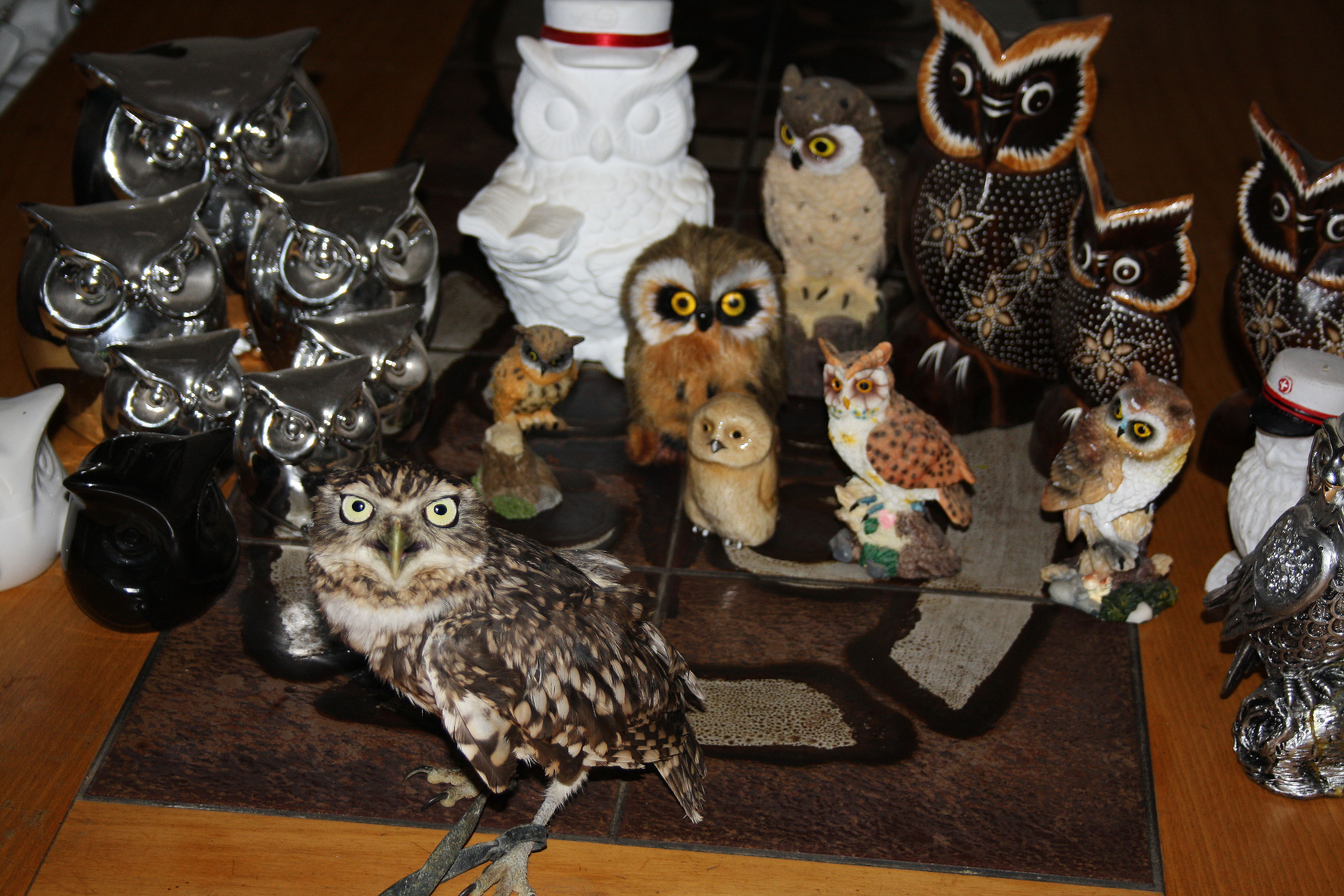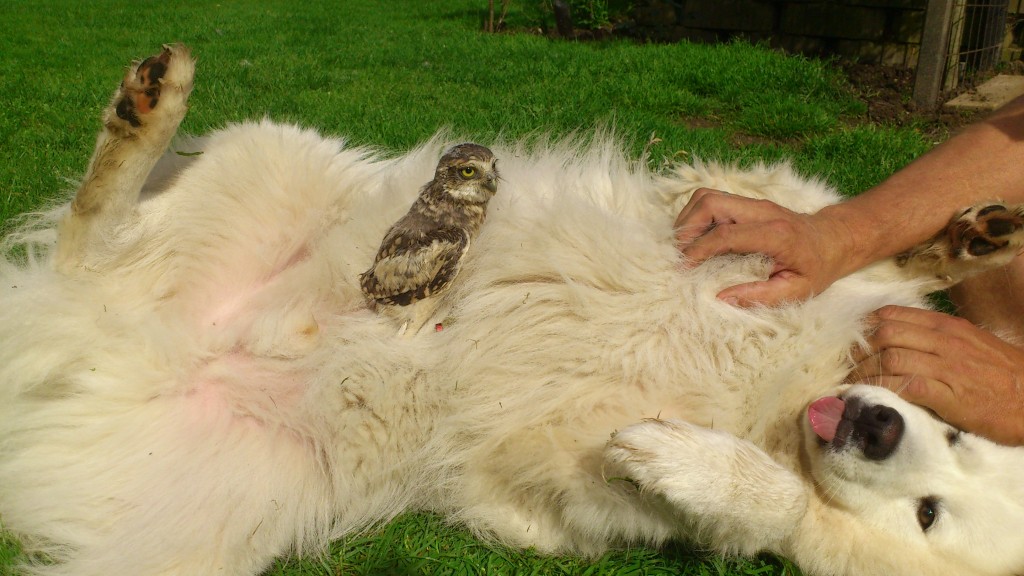
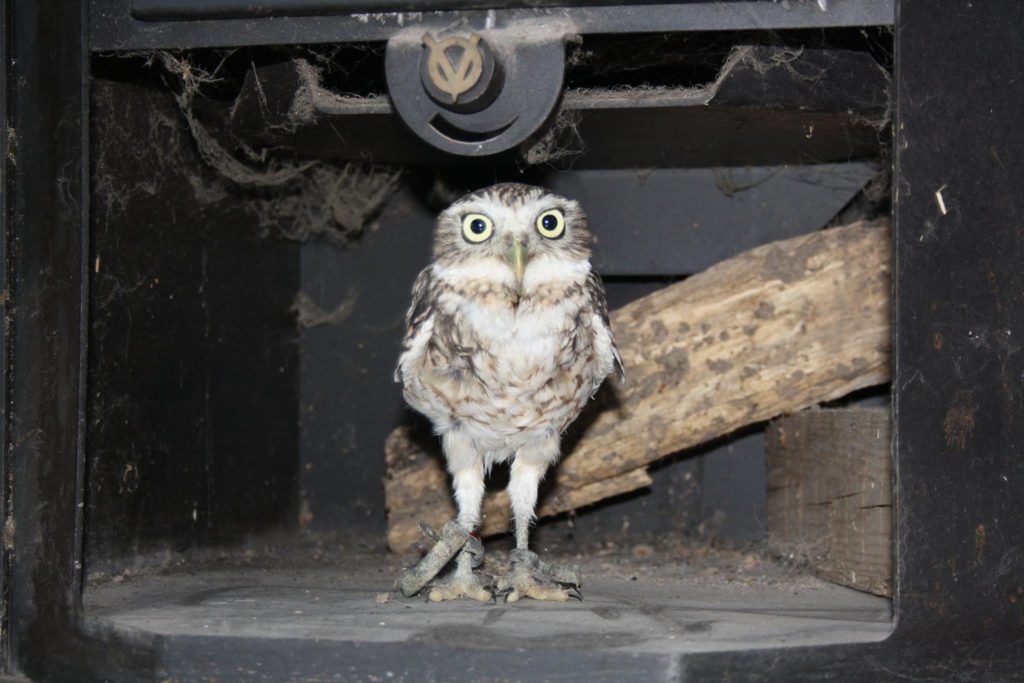
“I’m not stealing the firewood. Promise.”
I have made a lot of promises to provide more owl content, so I thought I would start out with one big blog post answering the most common questions I get asked if I bring him with me to the local market or pet shop for a day out.
Get ready for Owl FAQ!
“Oh my god, it’s alive?!”
Believe it or not, a startling number of people seems to believe I walk around with a tiny stuffed owl on my hand and I don’t think I will ever not enjoy seeing them jump when it suddenly turns its head 180 degrees to look at them.
Seriously, it’s the only socially acceptable way I get to scare the crap out of children.
…And yes, he IS alive. He’s just very good at staring contests.
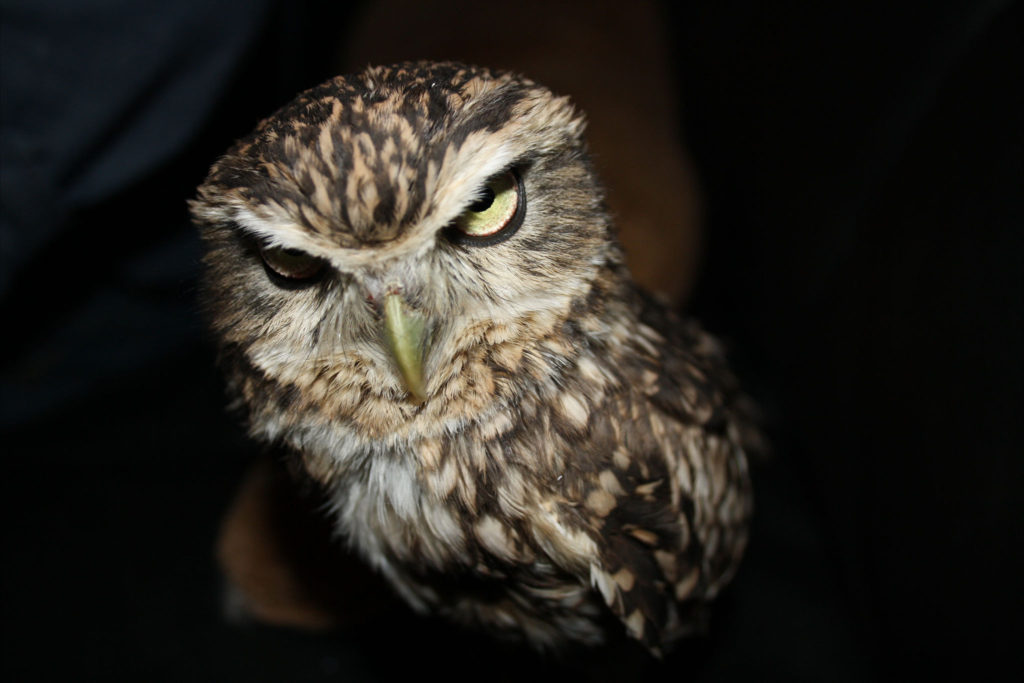
This photo has not been edited. At all. 100% authentic evil.
“What species is he?”
Also sometimes phrased as “Is it an eagle?” and I still haven’t figured out the logic there.
Artemis is a Burrowing Owl. In the wild, they often live on the prairie in holes in the ground that they will usually steal from prairie dogs. That also means that they have very long legs and short tails, because they spend as much time running as flying (and it’s my biggest regret that I don’t have footage of Artemis running, because it’s hilarious. Like a tiny, feathery Jack Sparrow).

He looks all fierce here, but 5 minutes after this photo was taken, I had to save him from an attacking blackbird.
“Is he fully grown?”
Yes. This is really as big as he gets.
“How old is he?”
As of writing, Artemis is 6½ years old, having been born in the summer of 2012. I’m just going to answer the next question immediately and say that I’ve been told Burrowing Owls can get to be 15 years in captivity (at most).
He was just three weeks old when I got him and he lived in a cardboard box (a cardboard box that my big dogs were terrified of for a week) until he learned to jump out and I had to put him behind bars.
Bonus fact: Burrowing Owls can jump freakishly high, even before they learn to fly and you WILL end up checking they’re okay every 10 minutes during the night because you heard a crash and you’re convinced they’ve broken every bone in their body.
“What does he eat?”
Mainly day-old chickens and mice.
Occasionally pepperoni.
“Where does he live?”
In my living room. He’s got a nice big cage where he can fly around and he also gets to fly around the living room when the doors and windows are closed (and I have moved everything I don’t want him crash-landing on).
“But it’s day-time. Isn’t he supposed to be sleeping?”
Common misconception. While all owls have excellent night sight, and as such will hunt during the night most of the time, not all owls are nocturnal.
Burrowing Owls are diurnal, which you can tell by the yellow eyes. Nocturnal owls have pupils that fill the entire eye, meaning their eyes are completely black and look like portals into the Void.
However, as every friend who has crashed on my couch will attest to, no one told Artemis he is diurnal, because he will keep hooting at you all night if he knows you’re awake.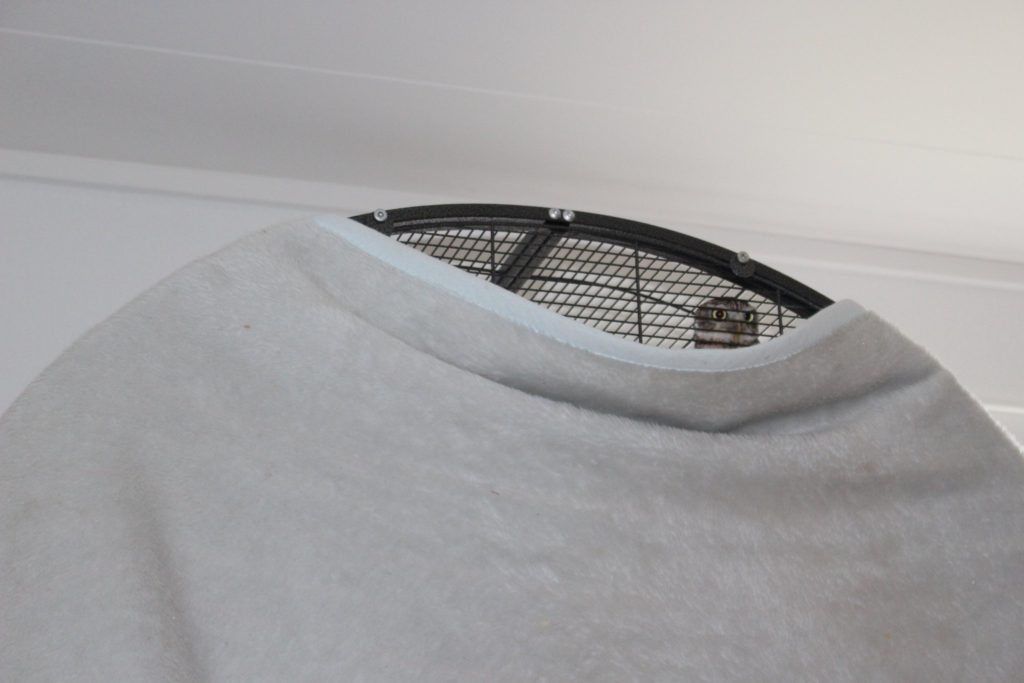
There’s not even a perch up there…
“How do you suddenly decide to get an owl?”
A lifelong interest in falconry and a desire to one day become a falconer myself (Artemis is basically my ‘starter bird’) led me to knowing this falconer who one day made the mistake of mentioning that he bred owls and sold the chicks.
“Can you really just keep owls as pets?”
No.
In Denmark, you’re only allowed to keep non-native species that have been bred in captivity, and you need a keeper’s permit (which I have). I have also agreed that the Danish Nature Agency can come visit me at any time and check on the conditions. In some countries, you’re not allowed to keep owls in captivity at all.
Yes, tiny owls might look cute, but you should not even consider getting one if you don’t already know a lot about owls and birds of prey. I can’t say this enough.
I think that answers the most common questions people have. If not, write yours in the comments!
Next owl post will be about why this cute-looking little shuttlecock is really pure evil…


